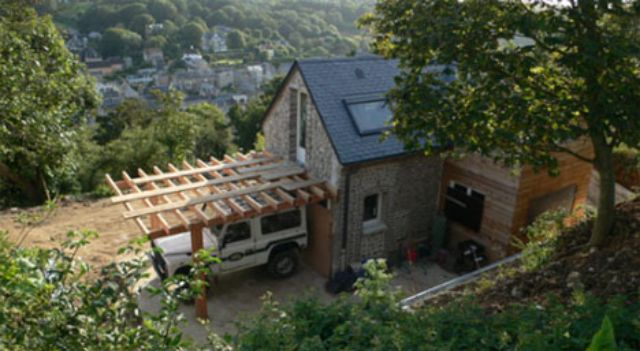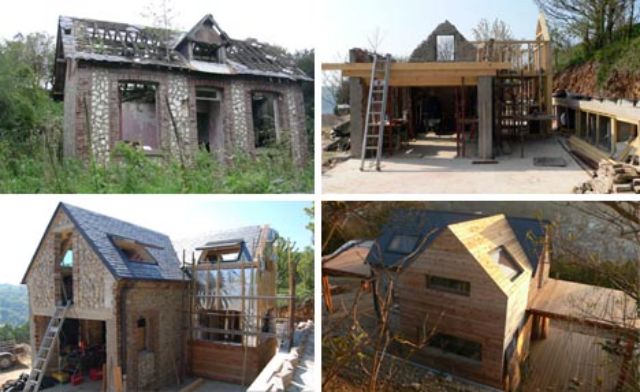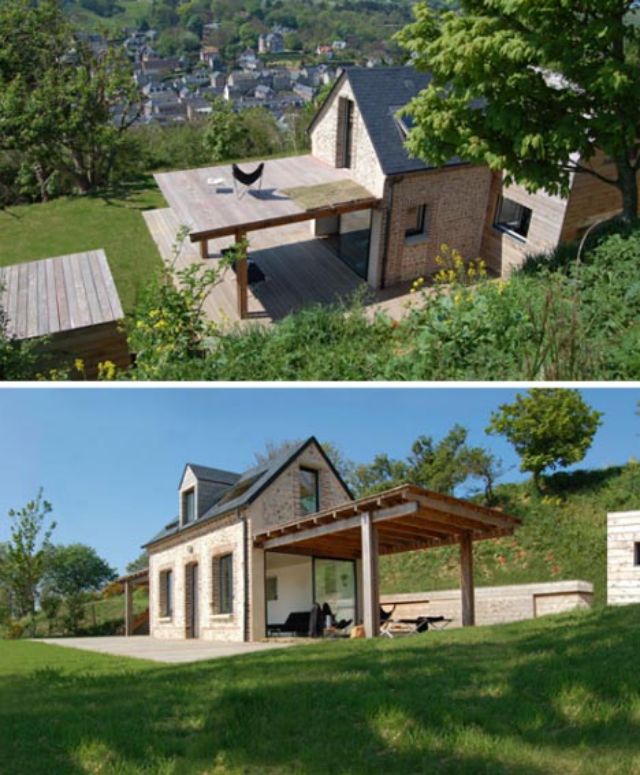Rural Ruins Converted to a Charming Modern Home
There is something adorable and quaint about the rural ruins of a stone hunting house on a hill, but moving into a building that is windowless (with crumbling walls and more holes than roof) requires a lot of work – particularly for those who want to preserve parts of the existing structure and add a number of sustainable strategies to the added architectural elements and spaces.

The proposed rural ruins to modern home conversion illustrated above was designed by Franklin Azzi to take this old barely-standing building and add new exterior and interior spaces to make it a livable home without compromising the essential central building already on the site. Moreover, the new design included provisions for integrating geothermal energy, solar power and rainwater collection.

Part of the process involved rehabilitating and reframing the interior of the stone part of the structure, adding a few critical skylights and other elements designed not to detract from the integrity of the original house but to provide for natural ventilation. Exclusively local and recyclable materials were used for all added parts.

Additions to the original portion were done in wood and other lighter materials to set them apart visually from the heavy stone of the main home, extending the existing spaces inside and out while providing contrast between old and new construction elements.

“Since the foundation of his firm in 2006, Architect Franklin Azzi developed his skills in architectures furniture and urban design throughout France and abroad. The firm premises are set up in a former industrial workshop of the 2nd Arrondissement of Paris. Franklin Azzi Architecture (FAA) deploys a multidisciplinary team composted of some 40 collaborators including: architects, interior designers, decorators, graphic designers, art historians, and also parametric design researchers. Thanks to being at the crossroads of these many disciplines, a process of collective reflection arises.”
“This attention to transversality allows FAA to explore, among others: large-scale renovation programs for industrial buildings, but also new construction, or specific interior design for luxury stores.”




